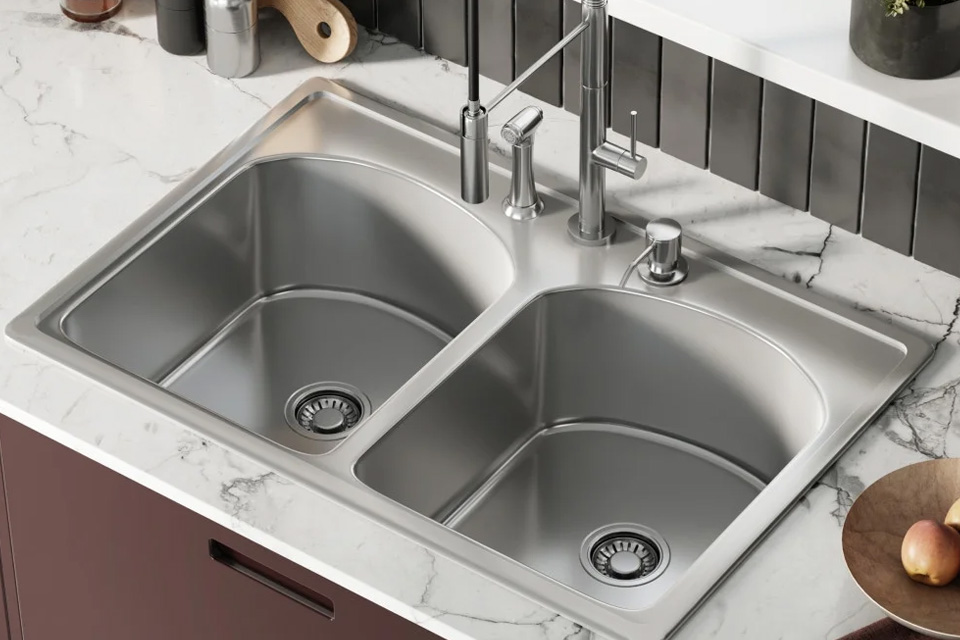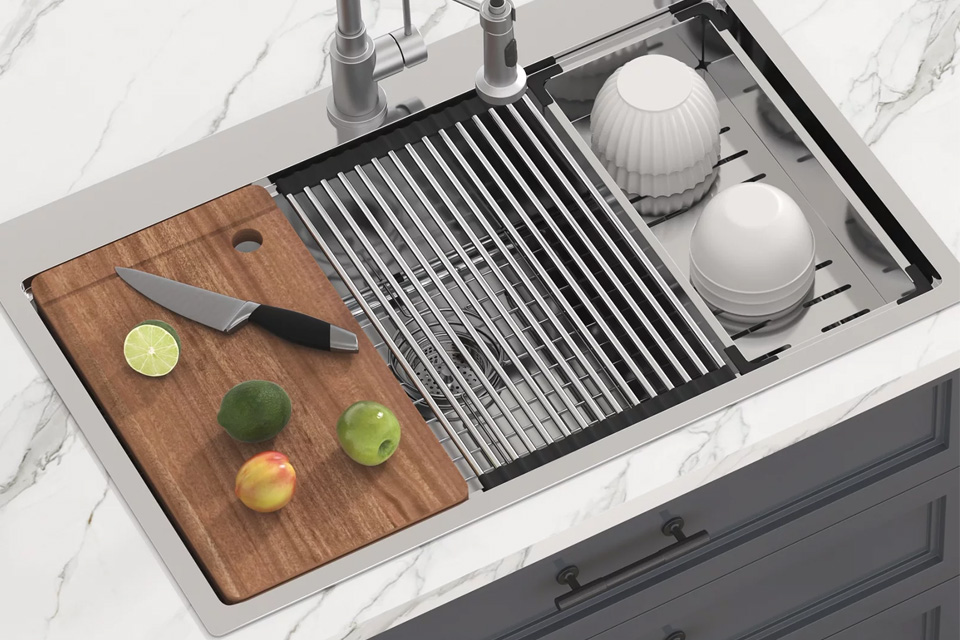
The Best Ways to How to Clean a Stainless Steel Sink
Table of Contents
Introduction
This guide will walk you through effective, tried-and-true methods to clean your stainless steel sink, removing stains and maintaining its pristine condition. Whether you’re dealing with daily grime or tough rust stains, this article will show you how to achieve a spotless finish.
Why Is It Important to Clean Your Stainless Steel Sink Regularly?
Stainless steel sinks are a popular choice in many kitchens due to their durability and sleek appearance. However, neglecting regular cleaning can lead to the accumulation of stains, rust, and even harmful bacteria. Regular cleaning not only keeps your sink looking great but also helps prevent scratches and other damage over time. Plus, a clean sink is essential for maintaining a hygienic kitchen environment.
What Is the Best Way to Clean a Stainless Steel Sink?
The best way to clean a stainless steel sink involves using a combination of gentle cleaners and non-abrasive tools. Bar Keepers Friend is highly recommended for its ability to tackle tough stains without scratching the surface. Start by rinsing the sink with warm water to remove loose debris. Then, apply a small amount of cleaner to a soft sponge or cloth and gently scrub in the direction of the stainless steel grain. Finally, rinse thoroughly and dry with a microfiber cloth to avoid water spots.
How to Clean a Stainless Steel Sink with Baking Soda?
Baking soda is an excellent and natural cleaner for stainless steel sinks. To clean your sink with baking soda, start by wetting the sink and sprinkling a generous amount of baking soda across the surface. Use a soft sponge to scrub the sink, moving in the direction of the grain. Baking soda’s mild abrasiveness helps to remove grime and stains without scratching the sink. After scrubbing, rinse the sink thoroughly with water and dry it to prevent water spots.
How to Remove Tough Stains from Your Stainless Steel Sink?
For tough stains that won’t budge with regular cleaning, a paste made from baking soda and water can be particularly effective. Apply the paste to the stained area and let it sit for a few minutes before scrubbing with a soft sponge. For extra stubborn stains, consider using a mixture of baking soda and Bar Keepers Friend. Always scrub in the direction of the grain to prevent scratches and rinse thoroughly afterward.
How to Deal with Rust on Stainless Steel Sinks?
Rust can form on stainless steel sinks, especially if they’re exposed to harsh chemicals or standing water for prolonged periods. To remove rust, create a paste using baking soda and water. Apply the paste to the rusted area and let it sit for about 15 minutes. Then, gently scrub with a soft-bristle brush or sponge. If the rust persists, try using a commercial rust remover that’s safe for stainless steel. Always rinse and dry the sink after treating rust to prevent it from coming back.
Can You Use Vinegar to Clean a Stainless Steel Sink?
Vinegar is another natural cleaner that’s great for stainless steel sinks. Its acidic nature helps break down grime and disinfect the surface. To clean your sink with vinegar, spray it directly onto the sink’s surface and let it sit for a few minutes. Then, wipe it down with a soft cloth, following the grain of the steel. Be sure to rinse the sink thoroughly afterward to avoid any lingering vinegar smell, and dry it with a clean towel to prevent streaks.
How to Deep Clean Your Stainless Steel Sink?
A deep clean is essential every few weeks to keep your sink in peak condition. Start by filling the sink with warm water and adding a cup of vinegar. Let it soak for about 10 minutes to loosen any built-up grime. Drain the sink, then sprinkle baking soda across the surface and scrub it with a soft sponge. Don’t forget to clean around the faucet and drain, as these areas can harbor hidden dirt. Rinse thoroughly and dry with a microfiber cloth to finish.
How to Keep Your Stainless Steel Sink Shiny?
To keep your stainless steel sink shiny, it’s important to dry it after each use. Water spots can dull the finish over time, so wipe the sink down with a dry microfiber cloth after every cleaning. Buffing the sink with a small amount of olive oil or baby oil can also restore its shine. Simply apply a few drops to a soft cloth and rub it into the sink, following the grain. This not only enhances the appearance but also adds a layer of protection against stains.
How to Avoid Scratches on Your Stainless Steel Sink?
Scratches are one of the biggest concerns with stainless steel sinks. To avoid them, always use non-abrasive sponges and cleaners. Never use steel wool or harsh scouring pads, as these can easily scratch the surface. Additionally, avoid leaving metal cookware or utensils in the sink for extended periods, as they can cause scratches or rust spots. If your sink does get scratched, minor scratches can often be buffed out with a non-abrasive polish designed for stainless steel.
Final Rinse and Dry: Why It’s Important?
The final rinse and dry might seem like small steps, but they are crucial for maintaining your sink’s cleanliness and appearance. After cleaning, always rinse your sink thoroughly with warm water to remove any remaining cleaning product, which can leave residue or cause discoloration if left behind. Dry the sink with a clean towel to prevent water spots and streaks. This simple routine helps to keep your stainless steel sink looking spotless and new.
Comments

The Comparison Between Double Bowl Sink and Single Bowl Sink
When designing your kitchen, selecting the right sink is crucial for both functionality and aesthetics. Two popular options are double bowl and single bowl kitchen sinks.

How To Choose a Good Quality Stainless Steel Kitchen Sink
Choosing the right stainless steel kitchen sink can significantly impact both the functionality and aesthetics of your kitchen.

How to Unclog Your Kitchen Sink: The Ultimate Guide
Are you facing the frustrating problem of a clogged kitchen sink? Don’t worry, you’re not alone.

How to Clean Your Stainless Steel Sink Like a Pro
Keeping your stainless steel sink clean and sparkling not only enhances the overall look of your kitchen but also ensures long-term durability and hygiene.
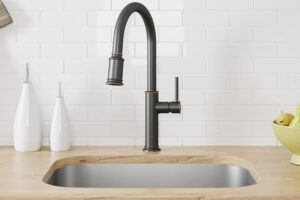
Can a Single Bowl Sink Have a Garbage Disposal
A garbage disposal is a practical addition to any kitchen, and even if you have a single bowl sink, it’s a great fit.
Tags
Related Blog
Learn the newest trends and common knowledge from our blog in stainless steel sinks business.
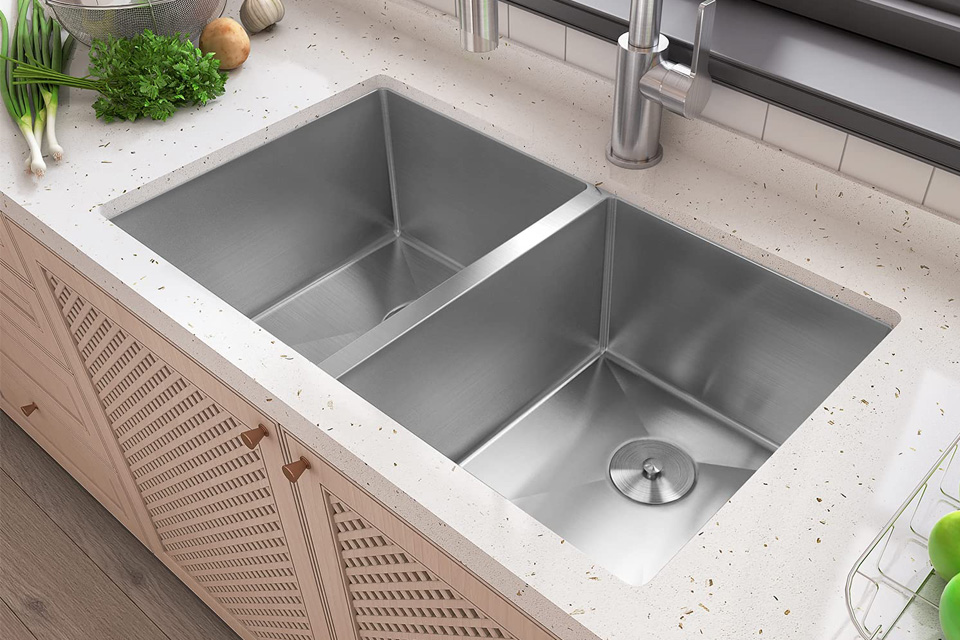
How to Seal Your Kitchen Sink to the Countertop: A Complete Guide
Sealing your kitchen sink to the countertop is a crucial step in ensuring a long-lasting, leak-free installation.

A Complete Guide: How to Install a Farmhouse Sink
Installing a farmhouse sink is a fantastic way to transform your kitchen with both style and functionality. These iconic sinks, also known as apron-front sinks, have become increasingly popular due to their deep basins and elegant design.
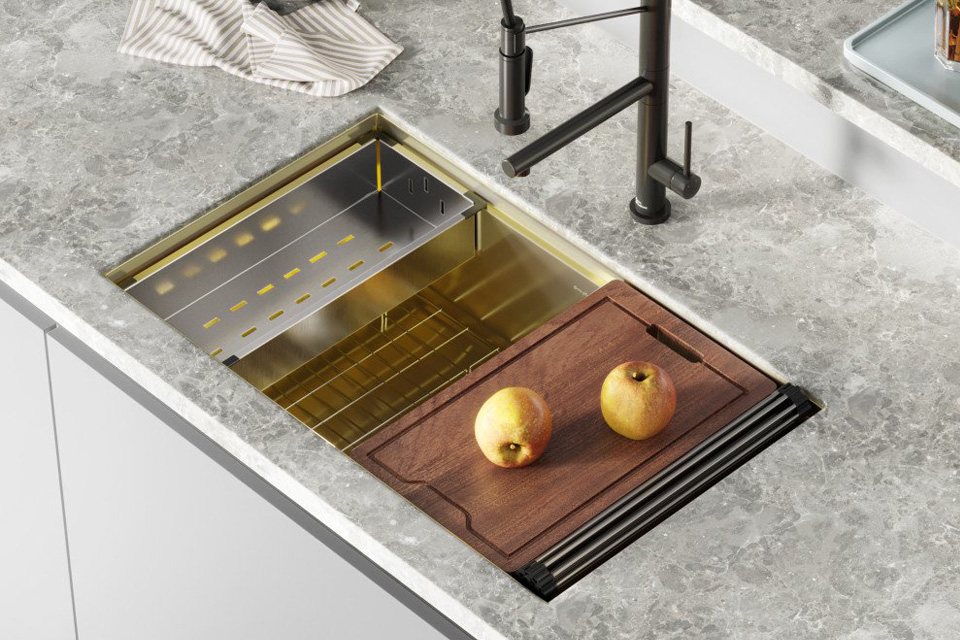
Choosing Kitchen Countertops for Undermount Sinks: The Ultimate Guide
Undermount sinks have become a popular choice for modern kitchens, and finding the right countertop to pair with them is essential for both aesthetics and functionality.


